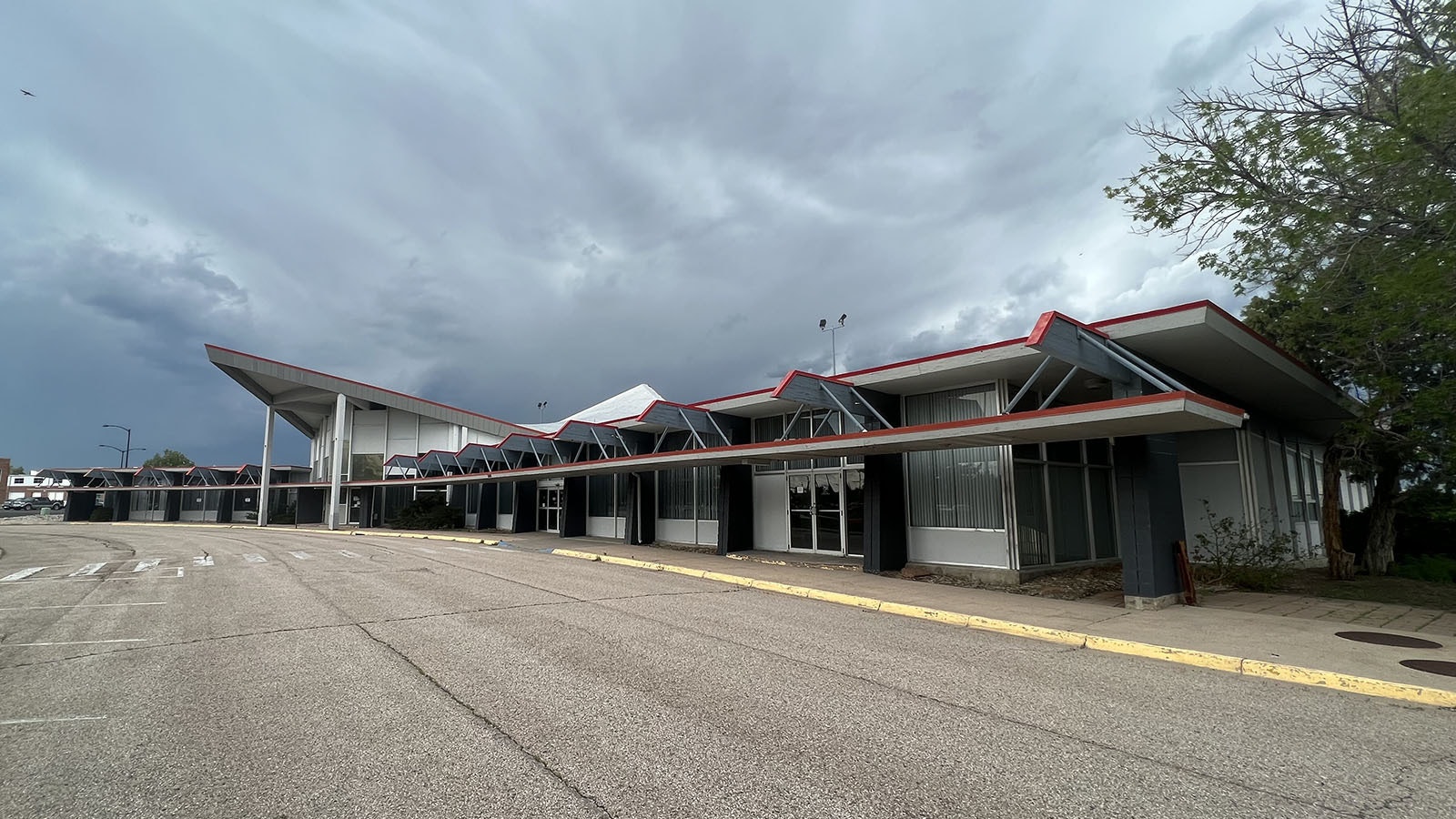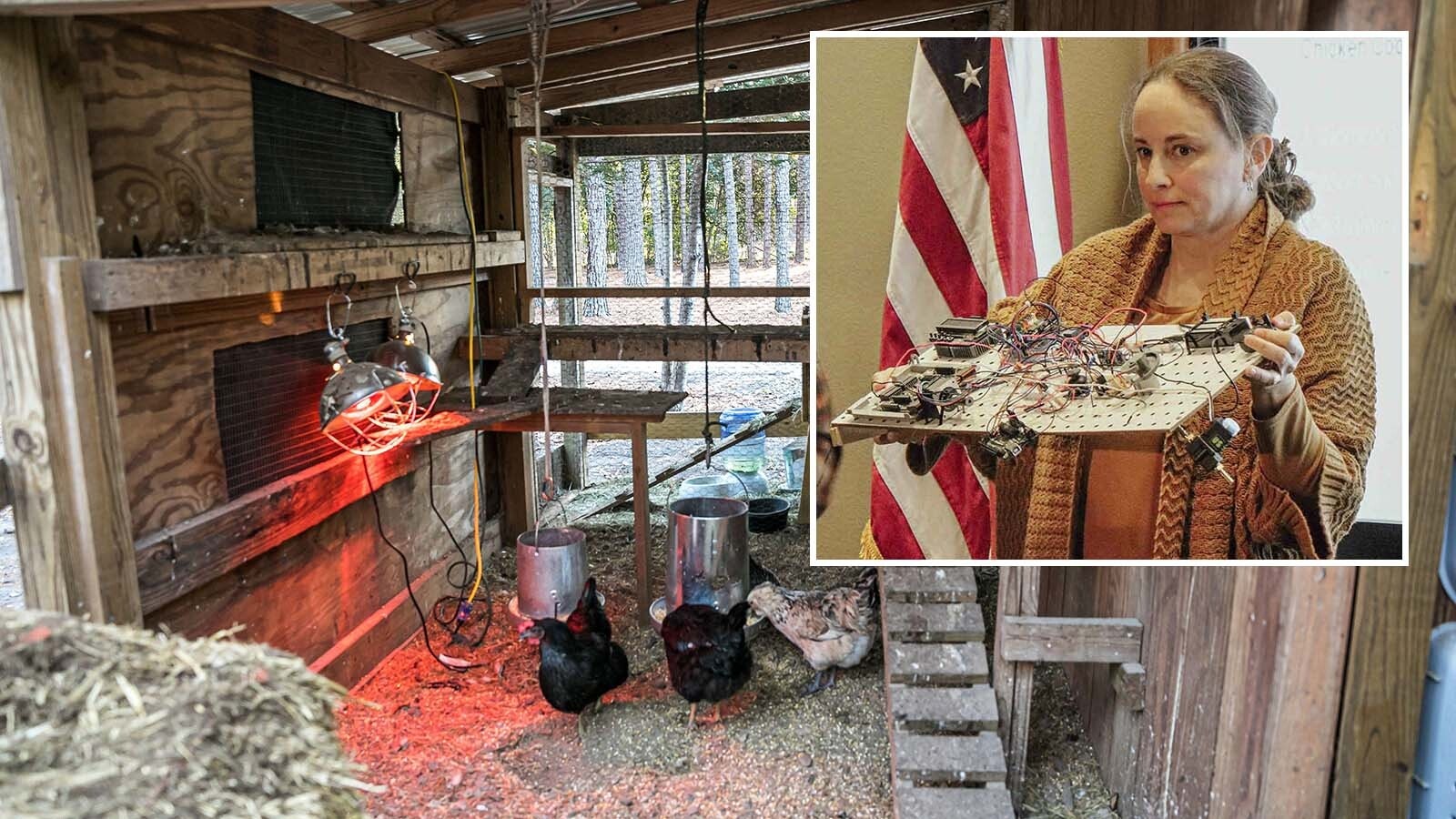Cheyenne once was known as the Rocky Mountain capital of the aviation world.
That history is buried in time, but could one day become a much more prominent vision with the recent announcement of a $50,000 grant to design a new use for the old Cheyenne Airport Terminal.
The award from the National Endowment for the Arts is what’s called an Our Town grant. These are invested in projects that demonstrate how art, culture and local development build stronger, more diverse communities.
“This initial grant is to help us with funding public meetings for a visioning process, which will then result in potential designs for the building,” Arts Cheyenne Executive Director Bill Lindstrom told Cowboy State Daily. “Architectural base designs are something that will come after that because this is a building that we want to understand all the historic aspects of, whether or not it should go on the National Register, and frankly, it probably should.”
Public meetings to gather input will not begin until July 1 or thereafter — the earliest the grant will be available. More details about that will be announced closer to when the series of meetings begins.
“Our next step is going to involve a very public process for trying to understand what everyone else thinks,” Lindstrom said. “We want to make it a community environment. We want to make it as accessible and fun as possible for the public to be part of not only the planning process, but of course, the operational part of it.”
That’s likely to include a combination of some great things coming together, from arts and culture to food and beverages.
“It’s to going to be a static environment,” he added. “It will be interactive. (That’s) the type of facility we anticipate just because that’s what people want. Whatever that interactivity may include is almost certainly going to include something hands-on that people can interact and participate in.”

An Iconic Shape
The shape of the airport terminal building echoes that of the old TWA terminal in New York at what is now John F. Kennedy International Airport. Before that, however, it was called Idlewild.
“Certainly what (Cheyenne’s terminal) is known for, its iconic identity, is the architectural uniqueness of the roof design, which is a parabolic design that mimics the old TWA terminal at what was called Idlewild at the time,” Lindstrom said.
“Now, as JFK, that particular building has been reformed into, I think, a hotel, restaurant complex or something like that. But that particular type of roof design is unique, and there’s very few of that type of roof design left," he said.
Cloud Nine
The Cheyenne terminal was also home to an iconic restaurant called the Cloud Nine.
“A lot of people hung out there,” Lindstrom said. “It had a little bit of the vibe that the Hitching Post had back in the day.”
Cowboy State Daily columnist Rod Miller remembers that. In fact, he was interviewed for a job there by former Gov. Ed Herschler back in the 1980s.
The interview didn't last long, as Miller recalled in a column. Herschler was more interested in the gear some hunters were carrying with them when they got off a plane.
"Herschler was inspecting their rifles, telling them stories and patting their backs," Miller wrote. "The governor drinking whiskey with armed strangers, with no security anywhere."
Aviation History
But above and beyond the unique architecture is the central role Cheyenne was playing in American aviation history, Lindstrom said.
That history began with a 1919 telegram that arrived at Fort D. A. Russel at the time, announcing that Cheyenne was to be a stop on the Transcontinental Reliability and Endurance Test. Eighty government-owned aircraft were to be raced across the country, from coast to coast, and back again.
At that time, most airplanes weren’t pressurized, so a stopover in Denver was logistically problematic, and the planes needed a stopover before the Rockies.
There was just one tiny, little problem with this. Cheyenne didn’t have an airport suitable for the test, which was to happen in a mere two weeks.
That brought the calvary out in the form of the Rotary Club, the Red Cross and YMCA, which helped the military build an 800- by 900-foot area just north of the present-day F.E. Warren Air Force Base, near Interstate 25.
When the test-day arrived, 70 planes landed with only two, non-fatal, wind-related crashes. Later, it was inspected, and given the thumbs up as one of the nation’s finest airfields, after which it was named Wales Field.
Denver Makes A Move, But Cheyenne Scores
Denver later tried to snatch Cheyenne’s spot on the Transcontinental Air Mail route, announced in 1920.
While Wyoming lawmakers thought Wales Field would make a fine airfield for this, the U.S. War Department had other ideas. Fort Russel was to serve as additional living quarters, and so could not be part of the airmail program.
This touched off another Hail Mary, with the community coming together to build a new airstrip on 200 acres of land about a mile north of Cheyenne.
That feat was accomplished in a mere 11 months from the announcement, after which a plane carrying 400 pounds of letters — 16,000 pieces in all — took off, right on schedule, for Salt Lake City Utah. This successful scheme shortened coast-to-coast mail delivery by almost two days, for just 2additional cents per letter.
The Airmail Act of 1925 helped seal Cheyenne’s place in aviation history. It dictated that Boeing Airplane Co., then operating as Boeing Air Transport Co., would take over the Chicago to San Francisco airmail route that included the Cheyenne Airport as a stopover.
In 1927, Boeing and Western Air Express added passenger services. Then they changed their name to United Aircraft and Transport Co. and located their main overhaul base in Cheyenne. The number of jobs associated with the base swelled to 500, providing a huge economic boost to Cheyenne.
Boeing Brings B17s To Cheyenne
During the war years, Boeing added a modification center, employing 1,642 workers at peak, whose job was to modify B-17s for the war effort,and/or give them their final outfitting prior to leaving for the air front lines.
Experts from all over the Allied world came to Cheyenne to learn about what was latest and greatest, and Cheyenne was a common stop for world-renowned aviators like Charles Lindbergh and Amelia Earhart. But the steady march of technology and success ultimately changed the aviation world and shifted the balance of power away from Cheyenne.
It began with the DC-4 in 1939, which could fly nonstop from Chicago to California at an altitude of 18,000 feet. That made the stopover in Cheyenne unnecessary.
While the war was on, Cheyenne retained aviation business, but that had just delayed the inevitable. After the war, United moved its maintenance facilities to San Francisco and its flight training school to Denver.
The stewardess training school moved to Cheyenne in 1947, but 14 years and 83,000 graduates later, it also had left Cheyenne for a new home in Chicago.
Despite that, aviation is still a big deal in Cheyenne, making the preservation of all that history in the old airport where it all started a no-brainer.
“As with any airport terminal, a lot of memories were created in the context of arrivals and departures,” Lindstrom said. “There’s a lot of history in the complex itself, and this particular building, of course, is an important part of the community. It has a place in most people’s hearts.”
Contact Renee Jean, Renee@CowboyStateDaily.com





